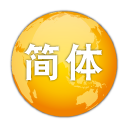When the elongation reaches 1%, it is the time to change your chain.
The easiest way to check chain wear down is when you feel the chain has lost its smooth running and agile shifting function. Put the chain on outer chainring, and lift up the chain from the middle of the ring; if you can lift it more than a half link, the chain or chainring are probably worn. If this is the case, chainrings and cassette sprockets may well also be affected.
KMC has developed a special digital chain wear indicator, the "Digital Chain Checker". This tool allows you to exactly measure the chain's elongation, changing the chain on time (not too early and not too late) prevents excess wear on other drive-train parts, so you can prevent unnecessary high repair costs.
There are also other effective mechanical tools on the market which can help you determine whether your chain needs to be changed or not.

 ENGLISH
ENGLISH  繁體中文
繁體中文  简体中文
简体中文  ČEŠTINA
ČEŠTINA  DEUTSCH
DEUTSCH  ESPAÑOL
ESPAÑOL  FRANÇAIS
FRANÇAIS  ΕΛΛΗVΙΚΆ
ΕΛΛΗVΙΚΆ  ITALIANO
ITALIANO  NEDERLANDS
NEDERLANDS  POLSK
POLSK  PORTUGUÊS
PORTUGUÊS  TÜRKÇE
TÜRKÇE 